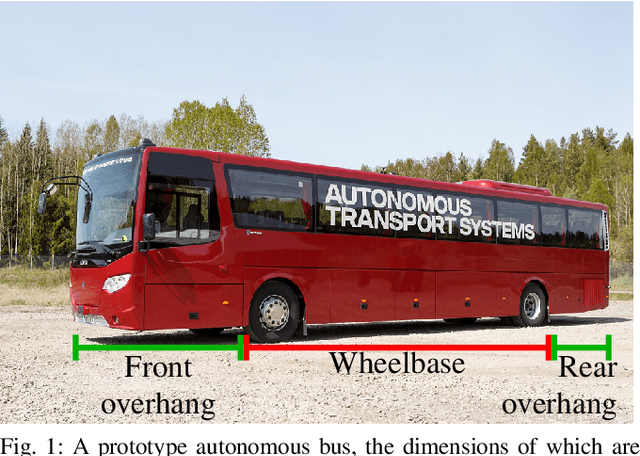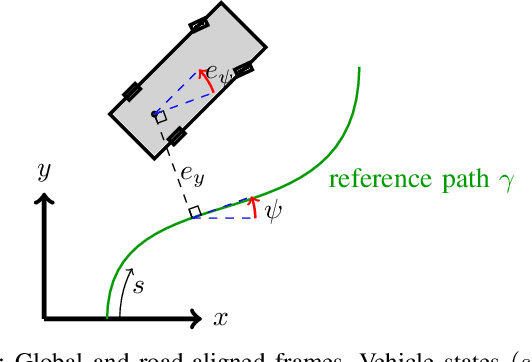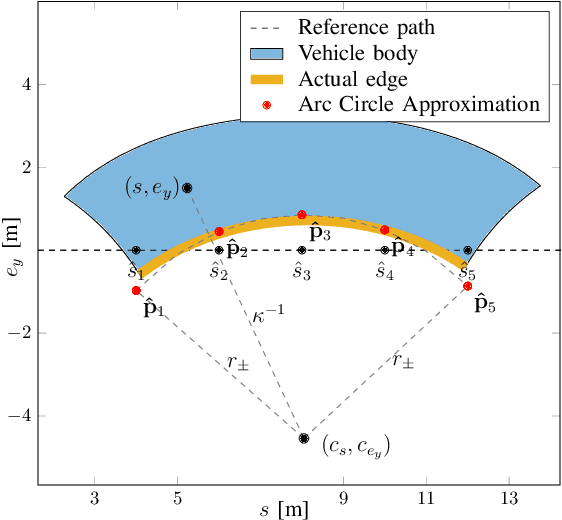Path Planning for Autonomous Bus Driving in Urban Environments
Paper and Code
May 05, 2019



Driving in urban environments often presents difficult situations that require expert maneuvering of a vehicle. These situations become even more challenging when considering large vehicles, such as buses. We present a path planning framework that addresses the demanding driving task of buses in urban areas. The approach is formulated as an optimization problem using the road-aligned vehicle model. The road-aligned frame introduces a distortion on the vehicle body and obstacles, motivating the development of novel approximations that capture this distortion. These approximations allow for the formulation of safe and non-conservative collision avoidance constraints. Unlike other path planning approaches, our method exploits curbs and other sweepable regions, which a bus must often sweep over in order to manage certain maneuvers. Furthermore, it takes full advantage of the particular characteristics of buses, namely the overhangs, an elevated part of the vehicle chassis, that can sweep over curbs. Simulations are presented, showing the applicability and benefits of the proposed method.
 Add to Chrome
Add to Chrome Add to Firefox
Add to Firefox Add to Edge
Add to Edge